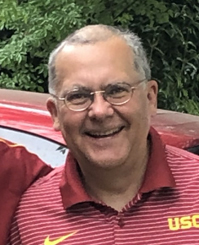Parkinson's
The Role of Astrocytes and Microglia in Exercise-induced Neuroplasticity in Parkinson's Disease



Posted November 14, 2023
Michael W. Jakowec, Ph.D., University of Southern California in Los Angeles, CA

Michael W. Jakowec, Ph.D.
(Photo Provided)
Patients with Parkinson's disease (PD) experience a decline in motor and non-motor function as their disease progresses. In PD, a decline in motor function affects movement, stability, and coordination, while a decline in non-motor function affects mental and cognitive function. Declines in these functions, which are both controlled by the brain and nervous systems, are in part due to ineffective communication of neurons in the brain. Synapses, the connections between neurons, experience a decline in function or breakage during PD that decreases neuroplasticity, or the ability of the brain to adapt to structural and functional changes. Supporting these synapses and neuron function can help slow the progression of PD and its symptoms.
With a fiscal year 2018 (FY18) Investigator-Initiated Research Award from the Neurotoxin Exposure Treatment Parkinson's Program (NETP), which Congress transitioned to the Parkinson's Research Program (PRP) in FY22, Dr. Michael Jakowec and his team aim to test the ability of glial cells, a type of nervous cell, to slow or treat the progression of PD through supporting the function and formation of synapses, called synaptogenesis. Dr. Jakowec is testing the ability of astrocytes and microglia, two glial cell types, to support bodily functions like metabolism, cellular communication, or homeostasis and improve the regulation of synaptogenesis. Dr. Jakowec discovered that exercise increases the activation of these cells; a study that he and his team conducted in mice models through this award found that animals involved in more strenuous exercise routines expressed more proteins found in astrocytes compared to those with less strenuous or sedentary routines.1
The results of these studies indicate that exercise and physical activity can play a large role in the maintenance and strengthening of cognitive and motor-related function in the brain, leading to a decrease in the progression of PD disease symptoms and motor/non-motor decline. It can also affect the creation of new pathways between neurons in the brain through synaptogenesis. In addition, the effect of PD on information processing and cognitive flexibility brings forward the need to understand where PD patients experience the disconnection in their understanding. Through their results, Dr. Jakowec and his team show that PD-induced brain structure may distort the model's ability to use cognitive flexibility in reward-based systems because the reward may become more important than the overall task process; this has implications in the development and testing of PD treatments that help improve cognitive flexibility and function. Dr. Jakowec and his team look forward to continuing their development of their findings in this field and supporting PD treatment research by improving understanding of cognitive and motor function deficits during PD progression.
Publications:
- Exercise induces region-specific remodeling of astrocyte morphology and reactive astrocyte gene expression patterns in male mice - PubMed (nih.gov)
- Cognitive flexibility deficits in rats with dorsomedial striatal 6-hydroxydopamine lesions tested using a three-choice serial reaction time task with
reversal learning - PubMed (nih.gov)
Last updated Friday, March 7, 2025














